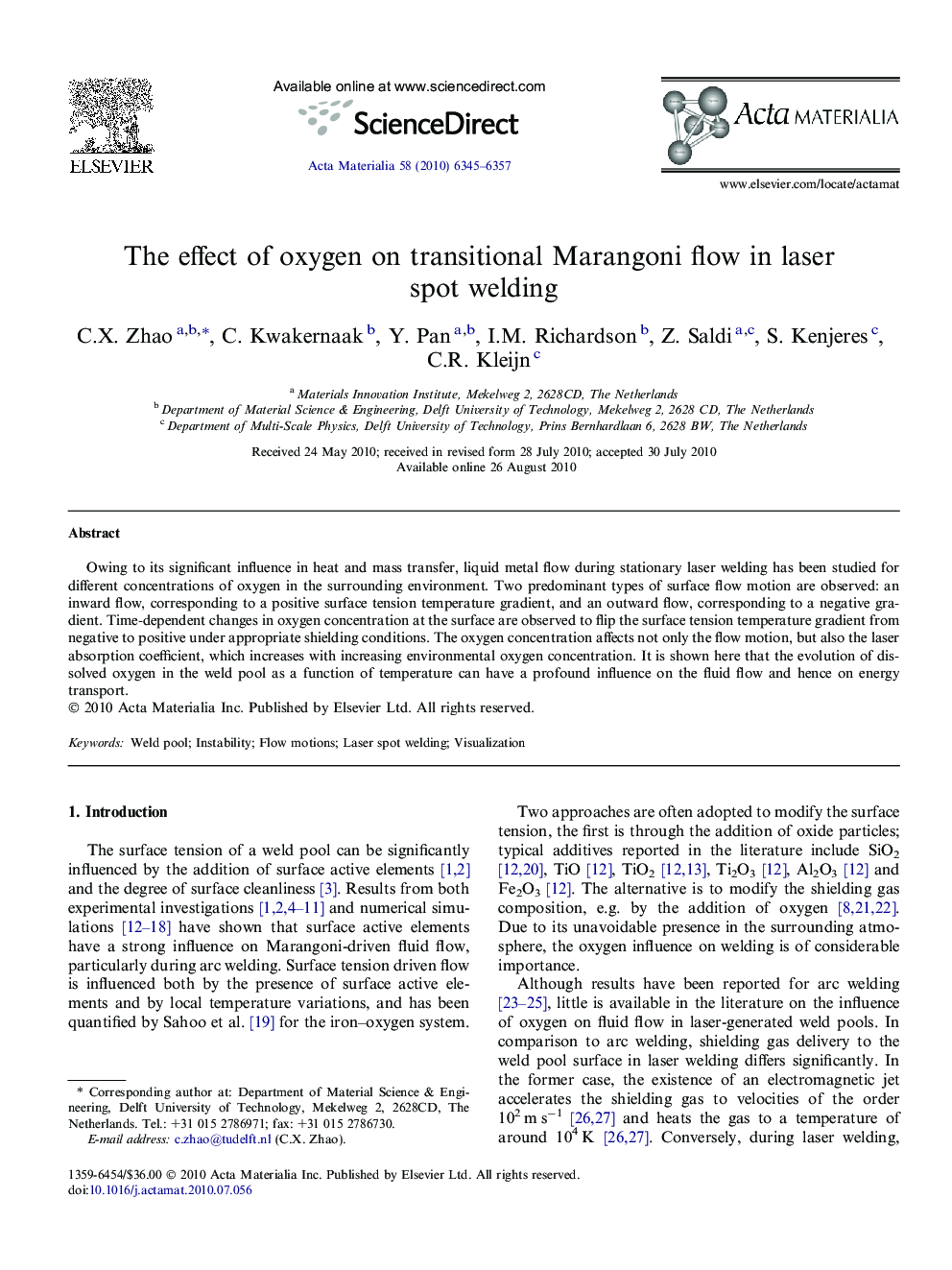| Article ID | Journal | Published Year | Pages | File Type |
|---|---|---|---|---|
| 10620659 | Acta Materialia | 2010 | 13 Pages |
Abstract
Owing to its significant influence in heat and mass transfer, liquid metal flow during stationary laser welding has been studied for different concentrations of oxygen in the surrounding environment. Two predominant types of surface flow motion are observed: an inward flow, corresponding to a positive surface tension temperature gradient, and an outward flow, corresponding to a negative gradient. Time-dependent changes in oxygen concentration at the surface are observed to flip the surface tension temperature gradient from negative to positive under appropriate shielding conditions. The oxygen concentration affects not only the flow motion, but also the laser absorption coefficient, which increases with increasing environmental oxygen concentration. It is shown here that the evolution of dissolved oxygen in the weld pool as a function of temperature can have a profound influence on the fluid flow and hence on energy transport.
Related Topics
Physical Sciences and Engineering
Materials Science
Ceramics and Composites
Authors
C.X. Zhao, C. Kwakernaak, Y. Pan, I.M. Richardson, Z. Saldi, S. Kenjeres, C.R. Kleijn,
